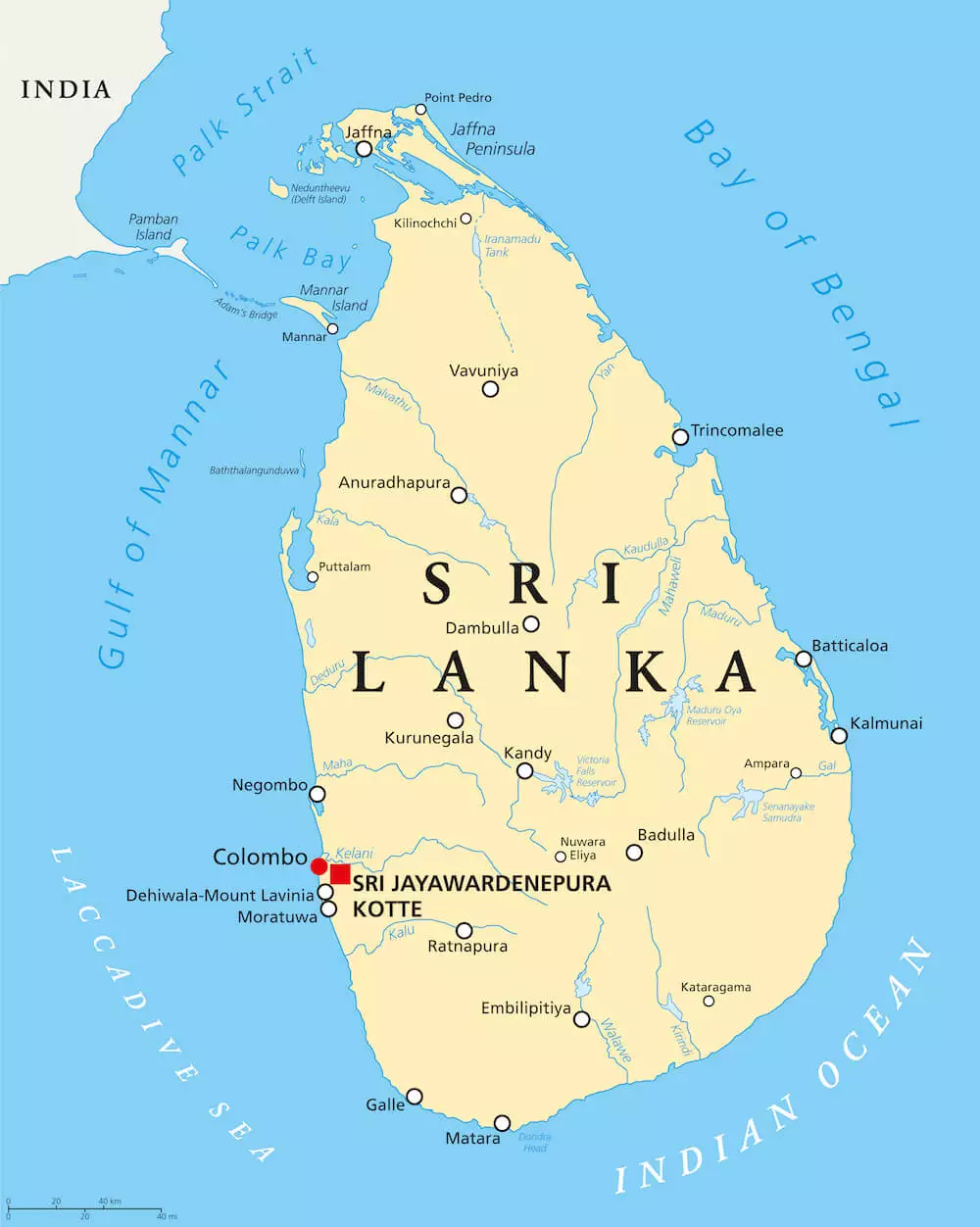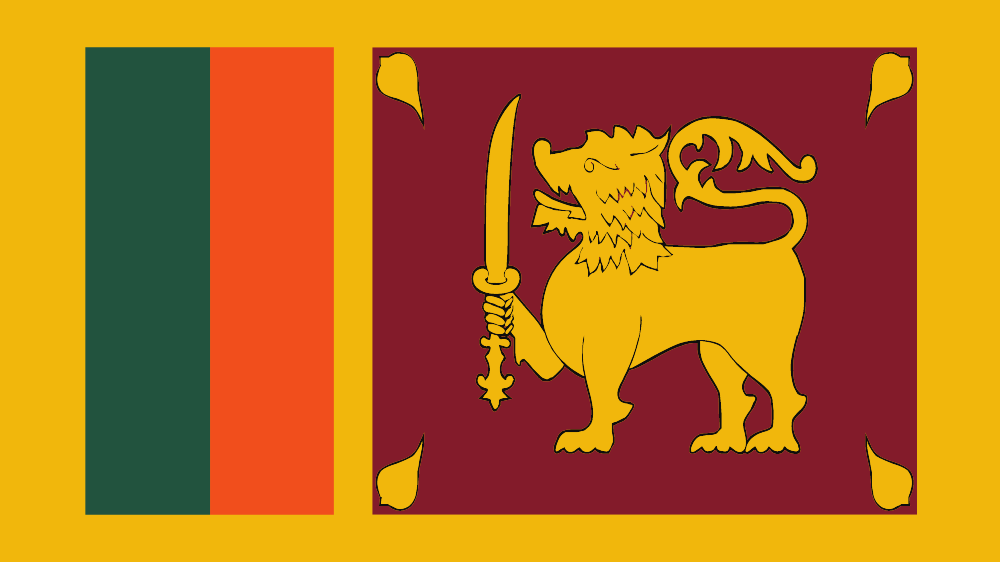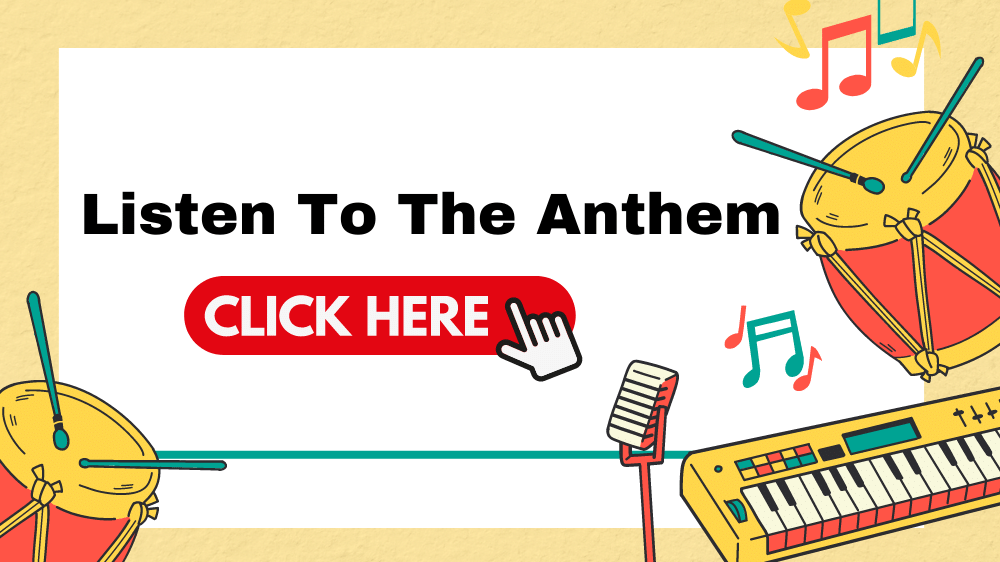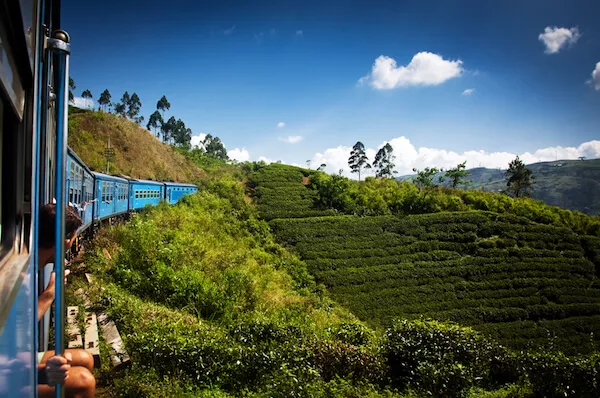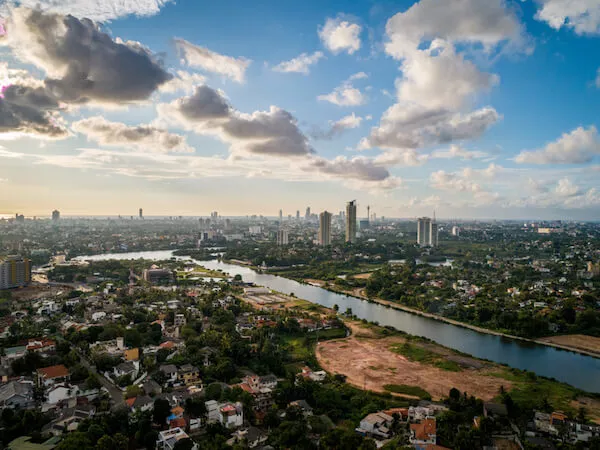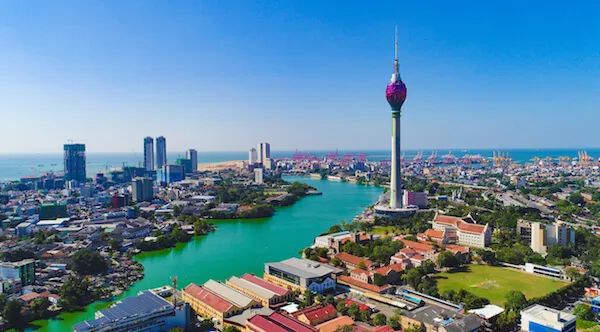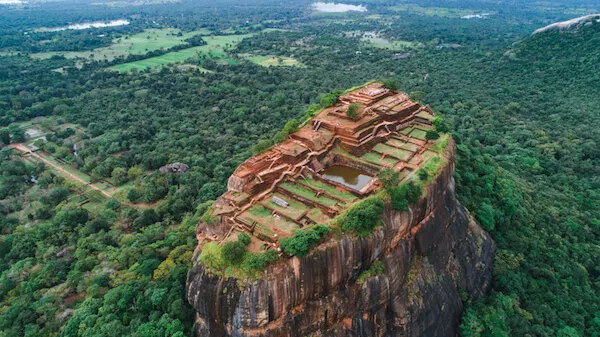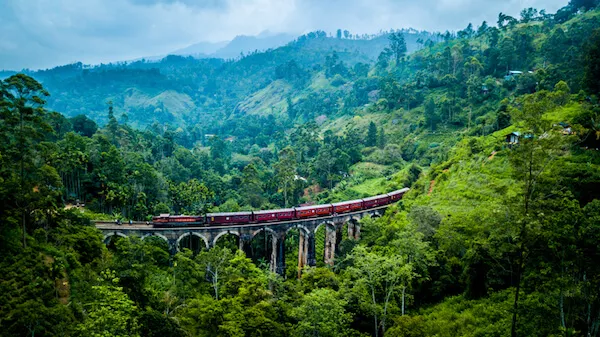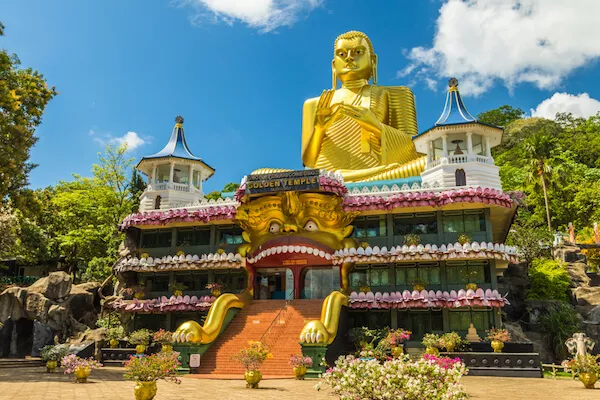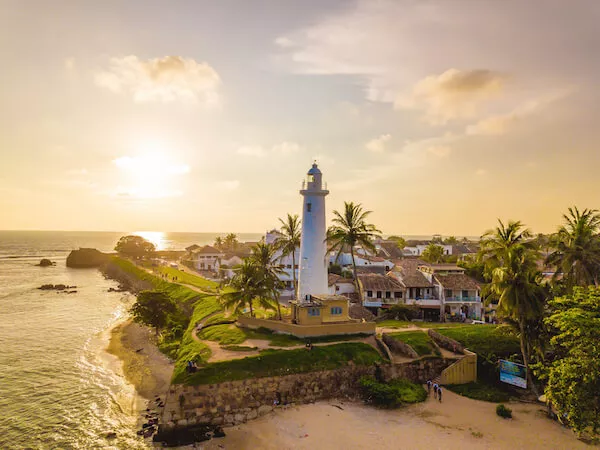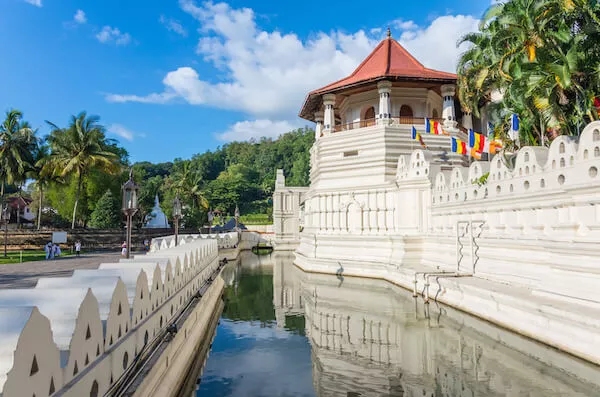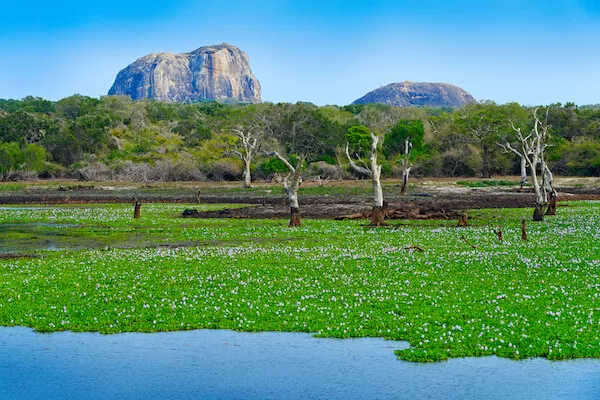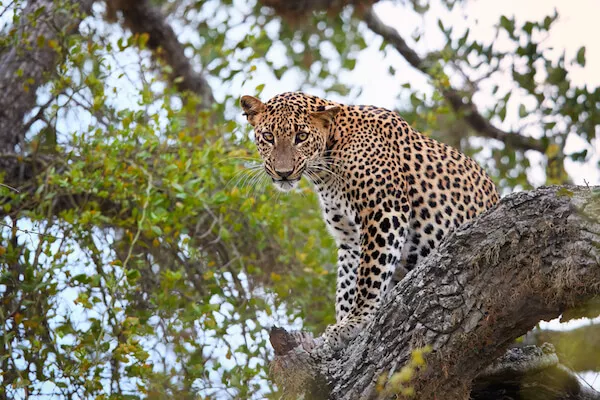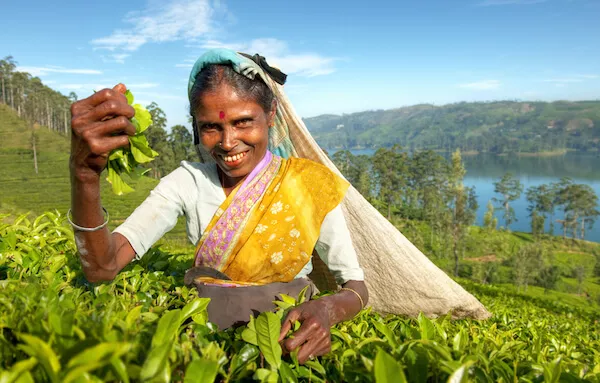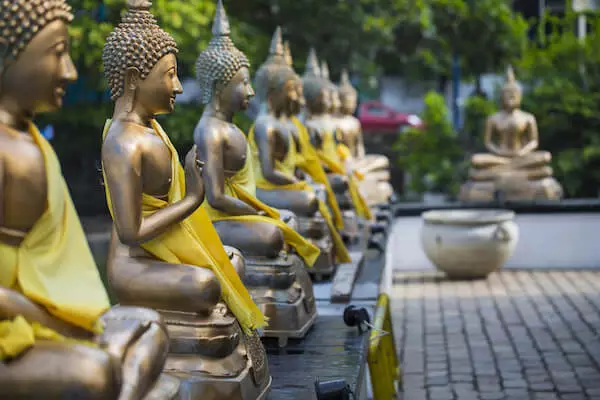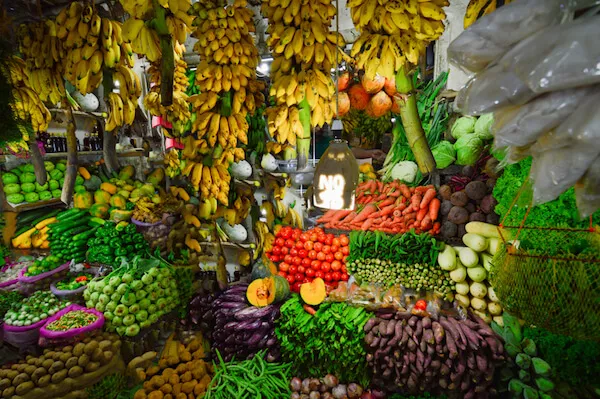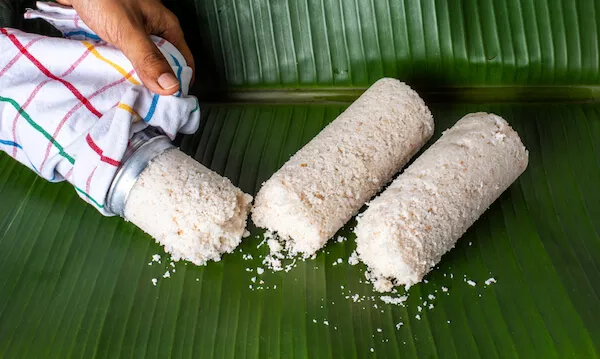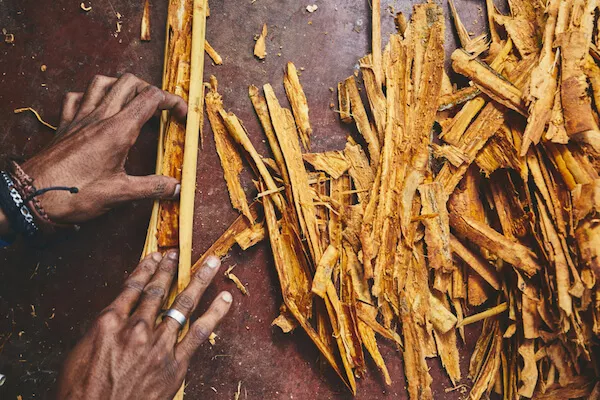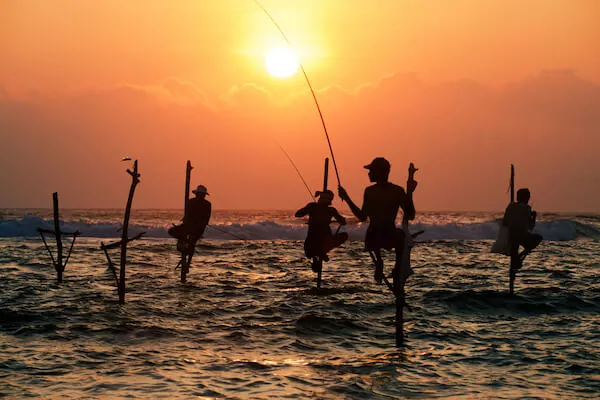
Introduction
The country of Sri Lanka occupies a pear-shaped island in the Indian Ocean. It was once a British colony known as Ceylon. Sri Lanka has two capitals, Colombo and Sri Jayewardenepura Kotte.
-
Population: 23 million inhabitants (2021)
-
Capital city: Sri Jayawardenepura Kotte, referred to as Kotte, with about 100,000 inhabitants and Colombo
-
Name: Sri Lanka, previously called Ceylon or Serendip, nickname: “Pearl of the Indian Ocean”
-
Government: Presidential republic
-
Languages: Sinhala and Tamil
-
Religion: mainly Buddhists (70%), Hindus (12%), Muslims (9%) Catholics (6%)
-
Currency: 1 Sri Lankan rupee = 100 cents
-
History: The island was first settled in the 6th century BC, most probably by people from India. Various kingdoms ruled on the island from about 200 BC. Portuguese and Dutch settlers arrived here in the 16th and 17th century before the British arrived on the island. In 1802 Sri Lanka became a British crown colony. Sri Lanka was granted independece on 4 February 1948.
-
National Day: 4 February (Independence Day)
-
National Symbols: Ceylon junglefowl (national bird), Ceylon iron wood tree (national tree), blue water lily (national flower), jackfruit (national fruit)
-
National Anthem: Sri Lanka Matha (Mother Sri Lanka)
Geography
Sri Lanka is an island country located on the Asian continent, more exactly in Southern Asia, south of India. A land bridge between the island and India existed until the 15th century when a cyclone broke the land bridge apart.
The island is mostly flat with some mountains in the central-southern parts. The island of Sri Lanka is surrounded by the Indian Ocean.
Map of Sri Lanka
Sri Lanka is slightly larger than the state of West Virginia/USA or about double the size of Belgium or slightly larger than Lithuania.
It takes a 10.5-hour flight from London/UK to reach Colombo/Sri Lanka, 17 hours from New York/USA and 14.5 hours from Sydney/Australia.
Geography Superlatives
-
The largest city of Sri Lanka is Colombo with about 600,000 inhabitants. Colombo is the main business centre of the country.
-
The Lotus Tower in Colombo is the highest tower in Sri Lanka with 350 m/ 1,148 ft. Lotus Tower is among the 50 tallest skyscrapers in Asia.
-
Sri Lanka’s highest mountain peak is the Piduruthalagala with 2,524 m/ 8,281 ft.
-
The longest river of Sri Lanka is the Mahaweli River with 335 km/ 208 miles.
-
Sri Lanka’s does not have any natural lakes, but there are several dams, water reservoirs and water tanks in the country. The largest reservoir is called Kala Wewa and is almost 7 km/ 22,000 ft long.
-
The Kandy to Ella train journey is often named among the most scenic train rides in the world.
On the road to Kandy
Landmarks and Attractions
Sri Lanka’s capital city Kotte
Colombo and Lotus Tower
Sigiriya Fort on Lions Rock
Nine Arches Bridge
Golden Temple in Dambulla
Lighthouse and Fort of Galle – image by Timo Gotz
Temple of the Tooth Relic in Kandy
Yala National Park
Animals in Sri Lanka
Sri Lanka is one of the world’s top biodiversity hotspots. There are more than 125 mammal special such as the Asian elephants or the Sri Lankan Leopard.
Leopard
The Horton plains in the central highlands of Sri Lanka are home to many endemic species such as the sambar deer and the purple-faced langur and many endemic bird species.
People
Most of the people in Sri Lanka live in the country’s southwestern regions and along the eastern coast as well as on the Jaffna Peninsula in the north.
The Sri Lankan people mainly live in rural areas and only 19% live in urban areas.
Tea picker in the tea plantations
Religion plays an important role in Sri Lankan culture and tradition. The religions in Sri Lanka are Buddhism, Christianity, Hinduism and Islam. Most of the people are Buddhists or Hindus.
Sri Lanka Buddha statues
A typical Sri Lankan tradition is when greeting or when meeting a person, you should put your hands together and say the phrase “Ayubowan” which means ‘hello’ in a much more formal way. Another tradition is to welcome people and offer a glass of water or drink when visitors come to your house.
Sri Lanka has many unique customs and traditions. An essentially Sri Lankan festival that is celebrated annually, is the Sinhala and Tamil New Year, which is commonly referred to as the Aluth Avurudda. We will add more info about festivals here soon.
The national languages are Sinhalese and Tamil. Did you know? Sri Lanka won the cricket world cup in 1996. The national sport is Volleyball.
Sri Lankan Food
Sri Lanka’s cuisine is renowned for its delicious rice and coconut dishes. The country is also famous for its spices mainly cinnamon and black pepper.
Rice is the main staple food and is eaten throughout the day. It can be served with different curries made with vegetables, spices, meats, nuts, yams and fruits.
Fresh fruits at the market
Typical Sri Lankan Food:
-
Kiribath: sticky and sweet milk rice
-
Lunumiris: spicy chilli sambal paste made with chilli, shallots, lime juice and spices. This sauce usually includes also cured tuna called ‘Maldive fish’ as the tuna used in the sambal comes from the Maldives.
-
Ambulthiyal: sour and peppery fish curry made with chilli, fish, tamarind and spices.
-
Pittu: steamed rice dish made with rice flour and shredded coconut and coconut milk. It can be served for breakfast with fruit or can be enjoyed also as a savoury dish with curry or dried fish
Pittu is traditionally eaten for breakfast
-
Kottu: shredded roti mixed with various vegetables, egg and meat such as chicken, beef or mutton
Economy
Sri Lanka is rich in gems, pearls and ivory. The main agricultural products are tea, rubber, coconut, sugarcane, coffee, herbs such as cinnamon and coffee.
The main trading partners are the USA, UK, India, China and Singapore.
Cinnamon is the inner bark of evergreen plants
Many people are also employed in the handloom and batik industry, fishing industry, clay industry, brass industry, mask industry and tourism industry. More than 2 million tourists visit Sri Lanka every year.
“In the southern coastal areas you will see many unique things, like stilt fishermen. Those fisherman stands on stilts from dawn to dusk to catch fish to sell.”
Fishermen on Stilts
History
The first people on the island were the Vedda. In about the 400s bce they began to mix with settlers from India. The island’s people came to be known as the Sinhalese. They later built an advanced Buddhist civilization. Beginning in the 900s ce Tamil invaders from India pushed the Sinhalese to the southwest. In the 1300s the Tamils set up a kingdom in the north.
European Control
The Portuguese arrived in 1505. By 1619 they controlled most of the island. The Dutch took over beginning in 1658. In the late 1700s the British took the island from the Dutch. The British called the island Ceylon. They grew coffee at first and then tea, rubber, and coconuts. Ceylon gained independence from Great Britain in 1948. The country adopted a new constitution in 1972 that changed the name to Sri Lanka.
Independence
The Sinhalese dominated the country’s government. They supported the Sinhala language and Buddhism over other languages and religions. The island’s Tamils soon wanted to set up a separate Tamil homeland in the northeast. In the 1980s heavy fighting broke out between Tamil groups and the Sri Lankan government.
In 2004 a tsunami, or huge wave, struck Sri Lanka. Tens of thousands of people were killed.
The fighting between the Tamils and the government came to an end in May 2009 when government troops took control of the rebels’ last base and killed the remaining leaders of the rebellion.
The information presented has been gathered from various sources, and due credit is attributed to the respective individuals or websites involved.
